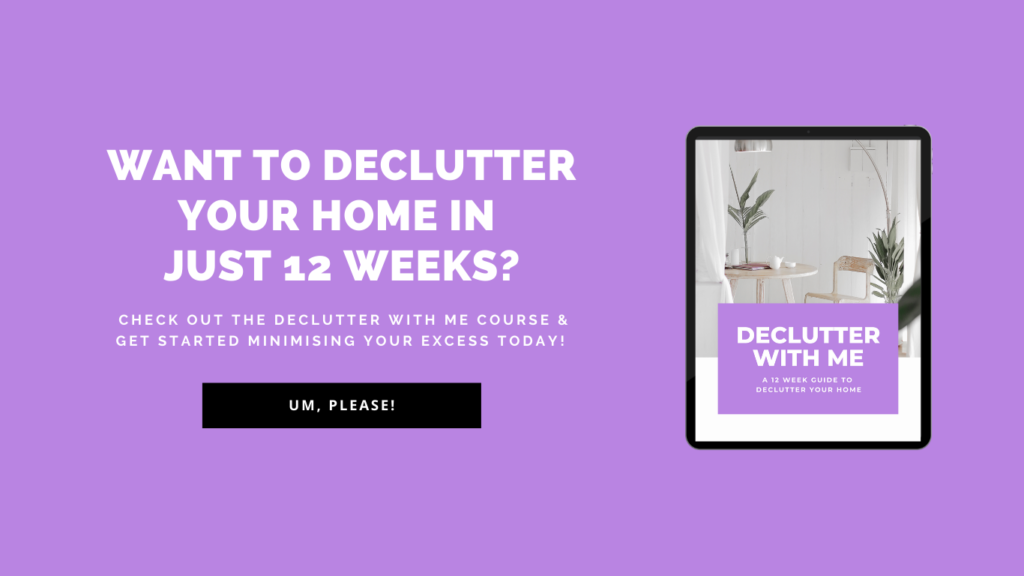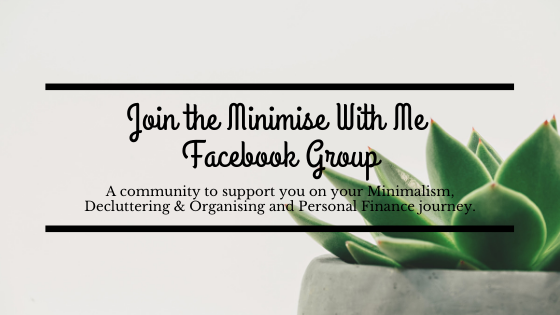With the new norm of fast fashion it can be easy for us to end up with an overflowing wardrobe filled with unwanted clothing choices that we no longer wear (and in some cases, never did) or that no longer bring us joy. We look into our bulging wardrobes and packed drawers filled with clothing options but still feel like we have nothing to wear. In this case sometimes less is more. When we can see what we have to wear, and compile a wardrobe of pieces that we love- with a little bit of planning, we can open up our wardrobe to better reflect what we need on a day to day basis.
But where do you start when you want to clear the excess and declutter your wardrobe? When we have so many clothes the thought of trying to go through them one by one and remove the excess can seem like an impossible task. Luckily there are questions we can ask that can help make the decluttering process of our wardrobes an easier and more successful event.
Here are 7 Essential Questions to Help You Declutter Your Wardrobe.
Let’s Get Started
Before you start going through your wardrobe grab three bins to help you organise your piles. They can be anything you have around the house: laundry baskets, boxes or garbage bags. This will help you keep track of what is what and avoid you getting confused down the line as the piles get bigger. Now grab a piece of paper and some sticky tape and label those bins – Yes, No and Maybe.
The Three Sorting Bins
Yes – These are the clothing items you want to keep. When you are done sorting, hang these back up in your wardrobe or fold them and put them back into your drawers. Remember to only keep what you can fit in your space.
No – These are the clothing items you no longer want. Donate this pile to a local charity clothing shop or bin. Be sure to toss any items that are non in sale-able condition.
Maybe – This is a pile for those items that you are unsure about. For anything that ends up here, keep them in a container somewhere separate to your current wardrobe. Set a calendar reminder on your phone to review this container in three months time. Over the next 12 weeks if there is anything in the container you want to wear, you can ‘save’ this item. Anything left in the container at the three month deadline can be donated.
Two Decluttering Methods:
Now depending on the time you have you have two methods to declutter your clothing.
1. All At Once: You can grab all your clothes and throw them on your bed to sort in one heap or;
2. By Categories: You can declutter your clothes category by category: dresses, shirts, shorts, underwear etc.
If you have a couple of hours or more to spare, go for the All At Once approach. This will mean you can declutter your wardrobe in session and being able to see the sheer number you have piled on your bed will help you let go. If you only have half an hour or so, it’s best to either wait until you have more time to do the full wardrobe declutter, or in this case, work on one category at a time.
Now let’s get into those questions and get decluttering your wardrobe!
7 Essential Questions to Help You Declutter Your Wardrobe
1. Do I love this?
As you pick up each item Ask yourself if you love the item you are holding. If you saw it in store would you buy it right now? As Kon Mari asks in her book the Life Changing Magic of Tidying Up, ask does it Spark Joy? Pick one item at a time and see how you feel about it. Is it something you love to wear and find yourself always holding out for wash day to wear it again? Maybe it’s a piece that reminds you of a negative experience every time you see it? If it doesn’t spark joy and you don’t love it put it in the no pile. If it brings you joy and you feel happy wearing it put it in your Yes pile. Building a capsule wardrobe of clothes you love will ensure that everyday you get to chose your outfit from a handpicked selection of clothes that you truly love and feel comfortable in!
2. Do I currently wear it?
Be honest with yourself. You know what clothes you wear regularly and what you haven’t touched in the past year. It’s more than likely it is the same outfits in rotation that you are grabbing each day. If you don’t wear something anymore ask yourself why? Is it something you would wear but it missing a button or needs a hole sewn? If so put it in a mend pile and get it repaired so you can wear it. Actually put your pile of to be mended items into your car and take them to the alteration shop that same week to avoid delaying wearing those items any longer. Is it out of style? If it is something you don’t see yourself wearing again let it go.
The Minimalists have a rule to help decide what you do and don’t wear called the 90/90 rule. For each item ask yourself if you have worn it in the last 90 days and if you would wear it in the next 90 days. If the answer is no, let it go. If that is too short, make it a 6 months post and prior rule the “180/180 rule” to cover a full year. If you haven’t worn it in the past 180 days (6 months) and don’t see yourself wearing it in the next 6 month period it’s probably time to put it in the no pile.
3. Does it fit?
This seems like an obvious one, but we are all guilty of hoarding clothes for that magical day when we have lost all our unwanted weight. Does your item of clothing fit you or have you been holding onto it for years waiting to lose or gain weight so it will fit? If you are unsure, try it on. Maybe it does fit now and you can keep it, or maybe you will remember that it doesn’t and if that is the case let it go. If you are really attached to an item, and determined to get back into it, keep one or two favourites but let go of the rest. By the time you meet your weight goals, you will want to reward yourself and invest in a new fresh wardrobe anyway.
4. Does it suit your current lifestyle?
A good rule of thumb is to keep at least 80% of your wardrobe of things you can wear on a day to day basis. You don’t want to end up with 90% of your wardrobe filled with dressy outfits that you can only wear on a Friday and Saturday night and have nothing much left to wear the rest of the week.
If you are change careers from working in an office to being a yoga instructor you can do away with the excess corporate uniforms. Maybe you only need to dress up at the occasional wedding or birthday party but have 50 dresses in your wardrobe? If so let go of any excess dressy outfits that you won’t be wearing to free up space for the clothes that you will be the majority of the time.
Related post: 17 Ways to Reduce Mindless Consumption in Your Life
5. If I found this in store would I buy it right now?
This one always helps me decide when I am stuck on whether to keep to donate something. Ask yourself ‘if I found this in store would I buy it right now’? If you wouldn’t buy the item you are holding again for whatever reason – it’s itchy, the colour doesn’t suit you, it’s too tight etc add it in your no pile. This question can cut through any guilt about what you spent on the item and will lose by letting it go and take you back to the real question – Do I want to keep this?
6. If I could sell this would I let it go?
This was a surprising one that helped me let go of lots of excess clothing. I found that if I imagined a scenario where I could hold onto something or get ten or so dollars for it, I would most often take the money and be willing to let go of it. These items I would put into a sell pile to upload on eBay which certainly helped claw back some of the lost money and helped give me that little extra push I needed at times to let something I no longer wore, go. Finding items to sell as you declutter your wardrobe can make the parting process slightly easier when you know you’ll get some bonus financial wins!
7. Is it Me?
This is the last question I like to ask when decluttering clothing. Something may fit okay and you may very much like it but you need to ask yourself is it me? Do you have stilettos that you know you won’t wear because you can’t walk in them? Or a dress that you used to love wearing but now don’t really feel like you have anywhere to wear it or doesn’t feel ‘you’ anymore? Maybe you have lots of colours in your wardrobe and now prefer more monochrome tones? As we age our tastes, interests and likes change and so do our fashion choices. What you may have liked three years ago might be completely different now. By asking ourselves ‘is it me?’ we can curate a wardrobe that consists of pieces that make us feel confident, comfortable and true to ourselves.
7 Essential Questions to Help You Declutter Your Wardrobe
- Do I love this?
2. Do I currently wear it?
3. Does it fit?
4. Does it suit your current lifestyle?
5. If I found this in store would I buy it right now?
6. If I could sell this would I let it go?
7. Is it Me?
What questions do you ask yourself when you declutter your wardrobe? Please comment below with your tips and what you have found helpful 🙂









